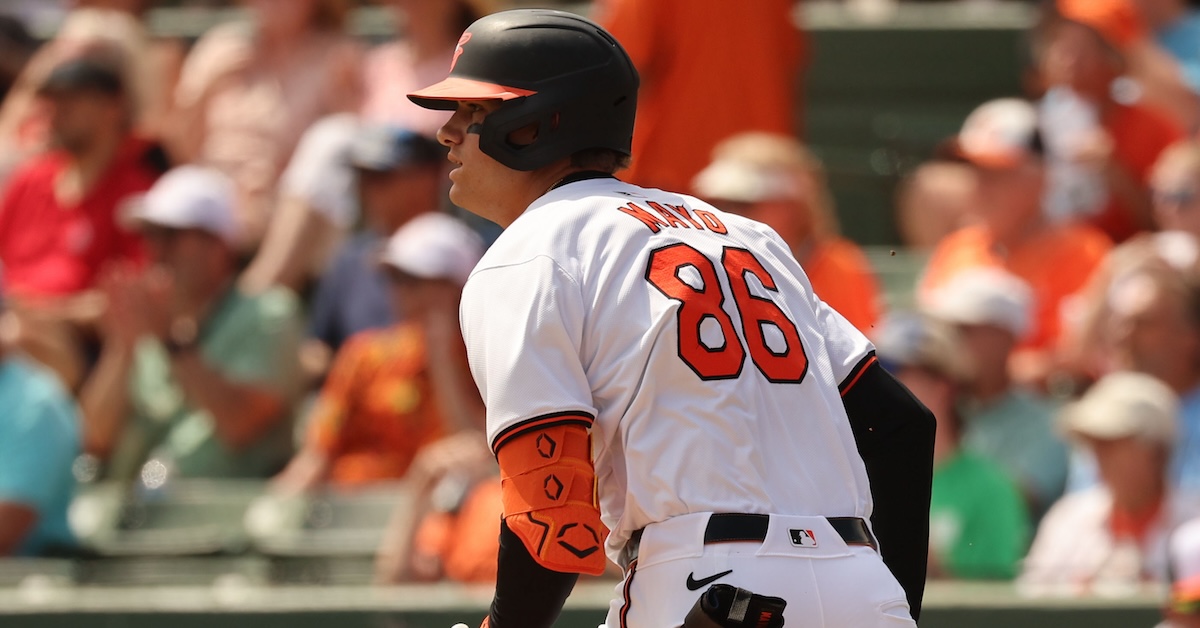
Kim Klement Neitzel-USA TODAY Sports
How would the Norfolk Tides do if they played in the majors? That might sound like an odd question, but it’s one that I’ve been asked four times in the last week. It even came up on Reddit. What’s driving this curiosity isn’t a sudden surge in rabid Tides fandom, but rather the heavy concentration of offensive talent the Orioles have in Norfolk, which until today, included one of the favorites for AL Rookie of the Year, Jackson Holliday. And since I’m one of a handful people with the exact tools of nerdery to answer this query, I couldn’t let it go unanswered.
So, just how good is Norfolk’s offensive talent? Pretty darn good, actually. In their first 10 games, the Tides have scored double-digit runs six times, including a 26-11 drubbing of the Charlotte Knights on April 3. Holliday was the biggest name before his call-up, but he was far from alone down there. Of the more than 400 players to have a plate appearance in Triple-A this season, only three have a projection above 2 WAR (Jake Alu just misses). One of them is Holliday. Another is Holliday’s teammate, Coby Mayo, another top Orioles prospect. The third, Lars Nootbaar, doesn’t really count, since he’s an established big leaguer down there on a rehab assignment. After Holliday and Mayo, you then have a number of players who may not be projected for 2 WAR, but are comfortably projected above replacement level, such that they’d be useful in the majors: Connor Norby, Heston Kjerstad, Kyle Stowers, Nick Maton, Peyton Burdick, and Maverick Handley all project above 0.5 WAR.
I don’t think we really need to compare Triple-A teams to the good major league teams, but how do they compare to the worst the majors have to offer? The Marlins might have the worst record in the big leagues, but the two teams we project with under .400 rosters are the White Sox and Rockies. And you know what? Mixing in the preseason projections for hitters at Triple-A Norfolk and facing them off against these two cellar dwellers makes the Tides look surprisingly plausible as a slightly competitive team:
ZiPS Hitter Projections – Tides vs. Rockies vs. White Sox
When it comes to offense, the Tides are relatively competitive against the White Sox and Rockies. It’s a solid group of hitters. What’s less solid is the pitching, a relatively thin part of Baltimore’s farm system — and the two most interesting prospects last year, Grayson Rodriguez and DL Hall, are no longer around to provide a boost:
ZiPS Pitcher Projections – Tides vs. Rockies vs. White Sox
While some of the Tides’ fringe arms match up well with the motley crew of Rockies and White Sox pitchers, the back end of Norfolk’s pitching staff is far less competitive.
To get a final number, I constructed a fictional league in which teams play all 30 major league teams five times and then, for the missing 12 games, played the AL teams one more time, minus the White Sox, A’s, and Royals. Since this is a simulation, I had the Rockies and White Sox play themselves in order to keep the opponent mix identical for all teams. For the Tides, I constructed a depth chart based on their current roster, minus the rehabilitating John Means. In the end, the Rockies averaged 68 wins and the White Sox 60. As for the Tides, while they put up a fight against the Pale Hose and would beat them in some simulations (about 34% of the time), they only averaged 56 wins. In other words, even when I let the Tides keep Jackson Holliday — he was literally called up as I was writing this paragraph — they aren’t as good as any of the current big league teams.
But are the Norfolk Tides even the right team to consider here? To answer that question, I repeated the exercise I had just done with the Tides with the 29 other Triple-A teams instead:
ZiPS Projected Wins – Triple-A Teams in the Majors
| Team |
Wins |
| Norfolk |
56.1 |
| Sacramento |
54.6 |
| Toledo |
53.4 |
| Worcester |
53.2 |
| Memphis |
52.9 |
| Nashville |
52.8 |
| Buffalo |
51.6 |
| Gwinnett |
51.3 |
| Reno |
50.7 |
| Indianapolis |
49.9 |
| Durham |
49.7 |
| Syracuse |
49.5 |
| Jacksonville |
49.2 |
| Columbus |
48.8 |
| Iowa |
48.4 |
| Rochester |
48.2 |
| Sugar Land |
47.6 |
| Round Rock |
47.3 |
| Scranton/Wilkes-Barre |
46.6 |
| Charlotte |
46.4 |
| St. Paul |
46.1 |
| Lehigh Valley |
45.8 |
| Omaha |
45.7 |
| Tacoma |
44.7 |
| Oklahoma City |
44.4 |
| El Paso |
43.8 |
| Las Vegas |
43.4 |
| Louisville |
42.4 |
| Salt Lake |
42.2 |
| Albuquerque |
38.6 |
As it turns out, the Tides are in fact the best projected minor league team. Now, this shouldn’t necessarily be considered a farm system ranking, as every minor league roster is populated with a lot of non-prospects. While every Triple-A team has a number of players who are plausible major leaguers and sometimes even pretty decent ones, once you get to, say, the seventh-best hitter or fifth-best pitcher, things start looking bleak, much more so even than with lousy major league teams. The White Sox and Rockies may be two of the worst teams in the majors, but in the big picture, they’re still pretty good at baseball.
Source
https://blogs.fangraphs.com/terrible-mlb-teams-are-pretty-good-at-baseball/
 Backyard GrillingWeekend WarriorsAdvice from DadBeard GroomingTV Shows for Guys4x4 Off-Road CarsMens FashionSports NewsAncient Archeology World NewsPrivacy PolicyTerms And Conditions
Backyard GrillingWeekend WarriorsAdvice from DadBeard GroomingTV Shows for Guys4x4 Off-Road CarsMens FashionSports NewsAncient Archeology World NewsPrivacy PolicyTerms And Conditions
